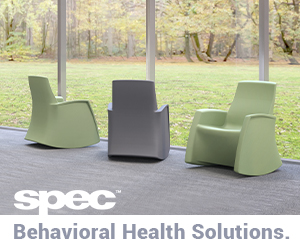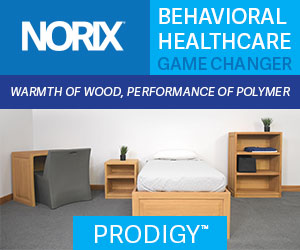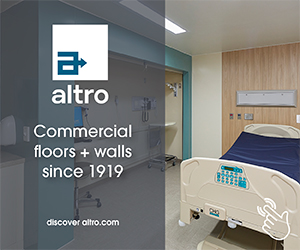 |
 |
|
APRIL 2021
Spring Inspiration

I think one of the easiest ways to find and nurture inspiration is by learning to be an active listener. Active listening is an ability we all have – it just takes practice.
How well we listen can have a major impact on job effectiveness and on the quality of relationships with others. You'd think that we'd be naturally good at active listening, but research found in Edgar Dale's Cone of Experience, suggests that we only remember 25 to 50 percent of what we hear. Clearly, we can all practice being better listeners. There are a few things we can all practice, especially in this day of virtual calls that will ensure we are actively listening.
First, pay attention to the person speaking - look at the speaker directly and notice, if possible, any body language. Show that you're listening by providing feedback and make sure to ask questions to clarify certain points, or summarizing what has been said.
The Center has several upcoming events where it will be an easy task to be an active listener. Our focus this month is Design for Aging with two workshops that address design challenges in senior environments.
The first workshop, Design for Healthy Aging: Solutions Across the Continuum of Care, on April 20, explores the latest in design thinking for healthy aging in various settings. Attendees will learn of state-of-the-art best practices and possible new solutions that enhance access to nature, engagement with technology, resilience, and meaning and purpose from an astounding faculty.
The second workshop, Coaching Workshop: Putting Evidence-Based Design into Practice in Senior Living Environments, on April 30 lets you work one-on-one with industry expert coaches who will provide practical guidance to get you started using the EBD process to inform your design thinking in your senior living environment projects.
And the good news is when you sign up for both workshops you can save $200 in registration. I hope to "see" you at one or both of these workshops.
Be well,

Debra Levin, Hon. FASID, EDAC
President and CEO
|
|
WE INVITE YOU
|
|
Today's webinars address how to become fluent in healthcare finance

Healthcare Finance Basics for Designers
April 15, 2021
10:00 AM PT/1:00 ET
Architects and designers aren’t formally educated in project finance, making healthcare client discussions about EBDIT a challenge.
Tune into the first of this four-part webinar series to close that knowledge gap with a basic lesson in healthcare funding.
We’ll share fundamental healthcare finance terms, how healthcare projects are funded, and criteria for project viability
Winning Work – the Financial Edge
April 15, 2021
12:00 PM PT / 3:00 PM ET
Healthcare design professionals rarely offer prospective clients finance approaches that can convert a proposal into a project. Join us for part two of this webinar series that will help designers ask key financial questions and seek external resources to develop a design proposal that demonstrates your ability to meet healthcare clients’ financial objectives.
The session will discuss data and metrics that resonate with CFOs, hospital and health system financial performance public data sets, and tips and tools for project proposals.
|
|
|
 |
|
Classic Resources
|
|
Job Board
Know someone looking for a job or have a job opening to post? Our job board is open to the public. Post your current job openings or browse current openings with some of our member companies.
Member Project: Parkview Health Learning Center and Greenhouse
How could a large health care provider use creative design principles to proactively improve the health of the community it serves, and empower its constituents to participate in enhancing their own individual well-being?
|
|
|
 |
|
Healthcare Construction Trending Smaller Post-Pandemic
|
|
U.S. hospitals, according to the American Hospital Association, lost $323 billion in 2020 revenue, primarily due to the elective and non-emergency procedures that were canceled last year so that COVID-19 patients could be given priority. The association estimates that 2021 will see losses between $53 billion and $122 billion.
CONSTRUCTIONDIVE, read more...
|
|
|
How COVID-19 is Reshaping Medical Facilities
|
|
COVID-19 has accelerated our need to consider the next generation of healthcare and, particularly, how medical facilities are built and designed to better serve patients in both “normal times” and times of crisis, like today. The ability to provide sufficient care stems from our health professionals — who have remained steadfast on the front lines of the pandemic — but as our experience with COVID-19 has widely revealed, it also has much to do with the building and design of the facilities themselves.
Medical Construction & Design, read more...
|
|
|
The Virtual Care Strategy Checklist: Implementing a Contactless Check-In
|
|
Like so much of healthcare, the patient check-in process underwent a drastic transformation this past year. Gone are the days of “sick” waiting rooms, often-touched clipboards and a cup full of used pens at the front desk. In fact, current CDC guidelines state that practices should consider asking patients to remain outside the facility until they are called in for their appointment or set up triage booths to screen patients safely.
MedCity News, read more...
|
|
|
Managing Life Safety During the Pandemic
|
|
The COVID-19 pandemic has impacted facilities as we adapt the physical environment to meet changing needs. Temporary physical changes may include installing temporary barriers, creating temporary screening locations, repurposing spaces, using temporary structures and more. Often, these changes create situations that are not in strict compliance with NFPA 101®, Life Safety Code®.
Health Facilities Management, read more...
|
|
 |
 |
 |
 |
|
ABOUT US
The Center for Health Design is a nonprofit 501c(3) organization whose mission is to transform healthcare environments for a healthier, safer world through design research, education and advocacy. Learn more. For information about sponsor or partnership opportunities, contact our VP of Relationship Development, Randy Carter.
|
|
|


















